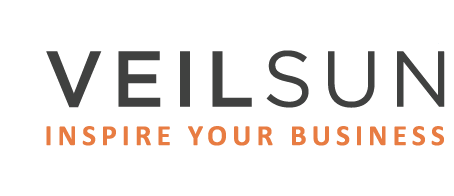
On the surface, investing in a healthcare compliance program may not seem like the best way to improve your revenue stream. However, the truth is, being out of compliance results in major fines. That’s a lot of revenue to waste on a solvable problem.
Paying massive fines every year shouldn’t be treated as a cost of doing business. Healthcare compliance programs with the right infrastructure can save you hundreds of thousands of dollars. VeilSun helped a major healthcare provider go from paying huge annual fines to running a continual compliance program that yielded zero issues on their next audit. Not a single fine.
We also saved them more than $100k on out-of-the-box software that wasn’t working. It doesn’t have to cost an arm and a leg to implement a functional, streamlined system to manage your compliance needs. You can save huge amounts of time, money and effort with an affordable, customizable solution that ticks the right boxes and keeps your organization compliant.
1. User-specific Dashboard Views
For any healthcare organization, compliance matters to everyone. But how much varies a lot. Your compliance team needs to be able to see different data than your end-users. It doesn’t make sense for a doctor or nurse to see the same dashboard as a hospital administrator, let alone an auditor. It’s a huge waste of time and training to present everyone with the same screen when some users only need a fraction of the functionality.
Much of the complex software for healthcare compliance tracking focuses the design on the needs of the compliance department so much that it fails to serve the day-to-day staff. The majority of a system’s end-users might only have a handful of compliance tasks each year. The best way to ensure that those tasks get completed in a timely and properly documented manner is to make it easy for those users. Again, the easier it is to use, the less likely you are to fall out of compliance and have to pay fines.
Having a role-based dashboard allows every user to quickly identify the actions they need to take. They can see what tasks need to be completed, what information needs to be provided and who (if anyone) needs to be notified. This makes the process much easier for both the users and the compliance team – who can assign tasks and send email reminders straight from their dashboards, saving time, money and hassle.
2. Automated Metric Tracking & Reminders
Tracking the required compliance metrics in a healthcare environment means pulling together data from a wide variety of sources. It also inevitably calls for a range of security clearances. There’s a lot of sensitive information to track, and it’s too easy for that data to get shared with the wrong person when trying to coordinate via email and spreadsheets.
A messy paper trail means more work for auditors, leading to higher costs and more likelihood of expensive fines. Having a single system to track metrics, store evidence and send reminders makes managing compliance so much easier. And the easier it is, the more likely you are to actually stay compliant. You don’t have to worry about sensitive data ending up in the wrong inbox or important tasks getting overlooked.
With the right system in place, compliance officers can assign ownership to appropriate users and set reminders based on required frequency (monthly vs. quarterly). Then, the system can automatically remind users before metrics are due, and those who have the data can directly enter it themselves.
3. Simple Collection and Storage of Evidence
How a system handles evidence collection, vetting and storage is a key factor in its usefulness and accuracy. The more a healthcare compliance program can streamline this process, the smoother audits will go, the happier everyone will be and, most importantly, the more money you’ll save.
By assigning responsibilities for every piece of required evidence, compliance officers can easily keep track of who needs to complete which tasks. Housing both the task management and evidence storage within the same system makes vetting and auditing the evidence easier, faster and more accurate. Ideally, collected evidence should be easy to access from the same dashboard in which it’s being tracked. That makes it much easier and faster to check the evidence provided against an audit request.
An effective compliance system should provide you with a single portal for evidence collection, vetting and storage. It should also allow you to assign responsibilities and track progress against any requests.
4. Issues Reporting & Corrective Action Plans
If compliance issues do happen, it’s vital to make sure that users know what needs to be done to address them – so they don’t happen again and you don’t get another fine. A strong healthcare compliance program will ensure that issue reporting, tracking and resolving is a clean and stable process.
To ensure nothing falls through the cracks, the system should automatically generate a ticket against every issue reported. That will allow compliance officers to quickly create a Corrective Action Plan (CAP) and assign it to the parties involved.
Just as the initial evidence was collected in one place, all of the documentation for the CAP and the resulting corrective actions should then be housed in the same place. This eliminates a long and cumbersome paper trail and makes access and resolution so much easier. Both the company and auditors can then track what’s been done to address an issue through every step of the process.
5. Automated Updates When Regulations Change
Keeping up with state and federal regulations can be a lot to manage, even with an entire department dedicated to compliance. As the COVID pandemic demonstrated, guidance information and regulations are perpetually updated, which can be difficult to manage across hundreds of users. Not knowing about a change isn’t an excuse for not being compliant. You’ll still get fined!
Your compliance team may receive notifications in a timely manner, but it’s much more challenging to ensure that the appropriate people receive and acknowledge these updates. In an established continuous compliance system, users can receive guidance updates directly in their personal dashboard and acknowledge receipt in the same place. This allows compliance officers to quickly disseminate information to their team and to track when those updates were received. You’ll be able to stay up to date on compliance tasks and avoid potential fines.
Easy Customization for Your Organization
While HIPAA regulations may be standard, every healthcare provider is unique. Off-the-shelf software likely won’t ever meet an organization’s particular needs, and it’s often incredibly expensive. Similarly, while tools exist to help build apps internally, healthcare compliance departments are often ill-equipped to tackle that kind of project.
VeilSun partners with those in charge of compliance to professionally design and develop systems custom fit to an organization’s exact needs. Working backwards from how audits are performed, we tailor the workflow to ensure a straightforward, easy to use system for every user.
To see the capabilities of our system in action and get a sense of what this could look like for your organization, contact us for a free consultation!









